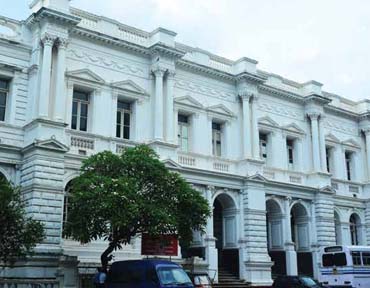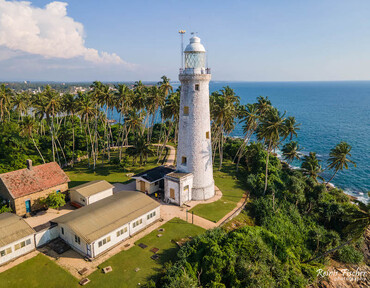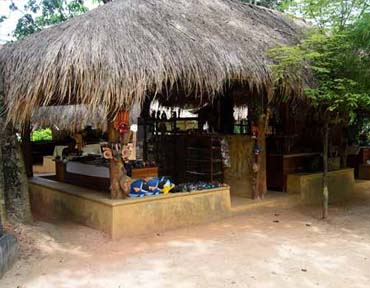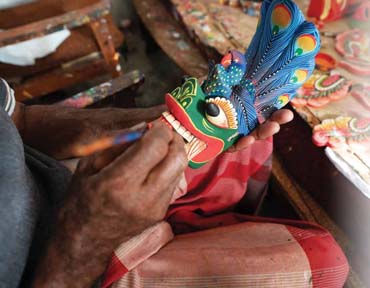


The General Post Office building was built in 1895 opposite the Governor’s residence at the King’s House (currently the President’s House), on King’s Street (currently the Janadhipath Mawatha). This Edwardian style building housed the GPO until recently, when it was moved for security reasons. A new GPO building was built for the Sri Lanka Post. The original building on Queen’s Street was built by Arasi Marikar Wapchi Marikar 1829-1925, who was also involved in building the Colombo Museum, Colombo Customs, Old Town Hall in Pettah, the Galle Face Hotel, Victoria Arcade, Finlay Moir building, the Clock Tower, Batternburg Battery etc

Barberyn Lighthouse (also known as Beruwala Lighthouse) is located on Barberyn Island. Barberyn Island a 3.25 ha (8.0 acres) island situated 0.8 km (0.50 mi) offshore from the town of Beruwala on the south-west coast of Sri Lanka, 56 km (35 mi) south of Colombo. The lighthouse is a 34 m (112 ft) high round white conical granite tower. The lighthouse was completed in November 1889 and operated by the Imperial Lighthouse Service. In 1969 it was upgraded with the replacement of the old dioptric apparatus (produced by Chance Brothers) and with a pedestal rotating beacon (Pharos Marine PRB-21 sealed beam optic and drive pedestal). It was further modernised in 2000, with the introduction of a Differential Global Positioning System (DGPS) and is computer linked to the other major lighthouses around the country. The Barberyn Lighthouse is one of the four international lighthouses in Sri Lanka

Ape Gama in Sri Lanka is a replica of traditional old day Sri Lankan village. This is located in Battaramulla, close to “Diyatha Park”. Ape Gama displays traditional industries, village life style and how self-sufficient old day Sri Lankan society functions in those days.

Traditional mask making is another unique industry in Sri Lanka. These handmade masks depict folklore and traditional way of life that is no-longer in wide spectrum in the country. Unfortunately, the it is an industry which is going downhill. The Mawgama Mask making is yet surviving of this tradition.